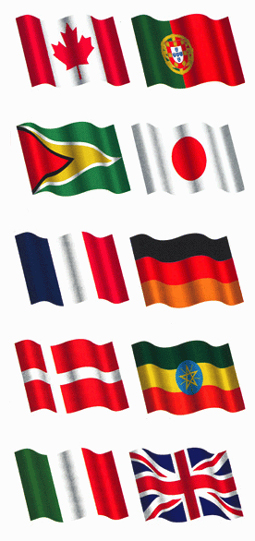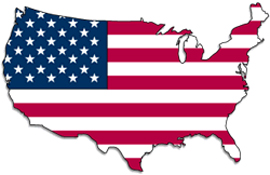Vexillology Information, Part 1 of 4
The primary function of flags has always been a form of social communication; as well as, having practical applications:

- National flags especially represent or identify the existence, presence, origin, authority, possession, loyalty, glory, beliefs, objectives, and status of an entire country.
- Flags authenticate claims, dramatize political demands, establish a common framework within which cooperating nations are willing to work out mutually agreeable solutions; or, postulate and maintain irreconcilable differences that prevent agreements from taking place.
"Just about every time we see a political activity or a national commemoration, flags are shown as a unifying force and patriotic expression."
- It is now almost impossible for our world or human society to be without flags.
- Flags constitute an explicit self-analysis by nation-states; so, vexillology may justify a claim to being an important aspect of the understanding of global societies and their flags.
- Since flags are flown on ships and buildings, flags are hoisted in battle and on mountaintops, flags are carried to the Olympic Games and to outer space, and flags are flaunted in sports events and in political rallies; flags of the world have become the primary symbols of our modern age.
- To understand the significance of a flag, one must appreciate a flag’s historical development, because the colors and designs (flag art) of national flags are usually not arbitrarily selected.
- Many flags can be traced to a common origin, and such “flag families”, linked both by tradition and by geography, are the basis for existing world flags.
- Both heraldry and vexillology have specialized terminology that is useful in making technical descriptions and such vexillological terms may be seen at this special list of vexillarium.
- The study of flags and state heraldry is by no means a matter only of dusty achieves, long forgotten heroes, and incidents.
- These flag symbols reflect political realities as well as changes that are as profound as nation-states themselves.
- Some countries have two flags, one known as the government or state flag and the other known as the national flag.
- The state flag is flown over government buildings and embassies in foreign countries; while the national flag is usually one of the flags flown by private citizens.
- Some countries have more than one “national flag”; a few countries have as many as four or five different flag designs serving as a national flag under different circumstances.
- Just bear in mind that vexillology, or the study of flags, is becoming much more significant than you might have assumed.

It is with such baubles  that men are led.
that men are led.
—Napoleon I
Also see the vexillogical word entries about flags at this vexill- unit.


